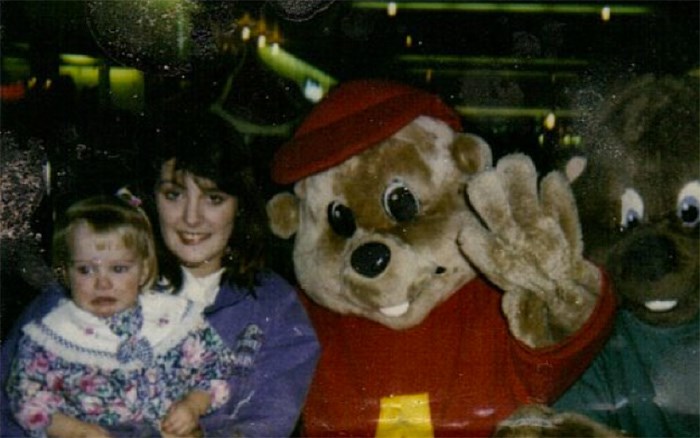
This is the second in a series of two articles examining what happened to the remains of some of Port Coquitlam, B.C. serial killer Robert Pickton’s victims. HERE is part one.
A small urn sits on a shelf in a Campbell River funeral home.
It supposedly contains the remains of Marnie Frey, one of Port Coquitlam serial killer Robert Pickton’s many victims. Parents Lynn and Rick aren’t sure. Neither are two undertakers.
The urn is likely to stay there until the Freys get answers acceptable to them from police and government about the handling of the remains.
Marnie Frey disappeared from Vancouver’s Downtown Eastside in 1997, one of six women Pickton was convicted of killing.
All that were found of her on Pickton’s farm were a partial jawbone and some teeth.
Her parents picked up the urn in December 2010 from regional coroner Owen Court.
The Freys and Marnie’s daughter Brittney hoped to lay Marnie to rest in Campbell River and end their ordeal. They brought the urn to Boyd’s Funeral Home with that intention.
Instead, the nightmare continued. With no cremation certificate or cremation disc with an identification number, they were told in Campbell River there could be no burial.
A cremation certificate did eventually show up, but it has proven insufficient in getting Marnie Frey’s remains buried.
The reason: there are lingering questions about the process that generated the urn’s contents.
The certificate lists the cremation date as Aug. 24, 2010, four months before Court gave the Freys the urn. It’s signed by Lawrence Little of Aldergrove’s Pacific Crematorium, but the date above Little’s signature is Oct. 6, 2011, 10 months after coroner Owen Court gave the Freys the urn.
Why the discrepancy in dates? There was no cremation.
The certificate says the remains were “heated in cremation chamber to facilitate proper processing and patriation.”
Records show the remains were apparently heated, then broken up with a mallet to get them into the urn.
“Wrapped in an envelope, rolled up in a towel and crushed with a mallet,” Court confirmed. “This is exactly what was explained to the Freys' lawyer, CPBC [funeral industry regulator Consumer Protection B.C.], the RCMP and anyone else who has asked.”
Little confirms this, saying correct protocols were followed. He said the use of the mallet was not taken lightly and after much discussion between he and Court.
And, Court said, the family was told what they were being given.
He said he signed the cremation certificate only to give the Freys an opportunity to bury their daughter.
“Under no circumstances were the Freys misled,” Court said. “Every aspect of the handling of the remains and reasons for their unusual consistency in the urn was explained to them in great detail. The conversation was held in my office in Burnaby, witnessed by a colleague and documented.
“The Freys left happy and specifically asked me to thank Lawrence for all he did,” he said.
A week before Little signed the cremation certificate and 10 months after the remains’ return to the Freys, B.C. chief coroner Lisa Lapointe had told Frey lawyer Neil Chantler in a September 2011 letter, “the remains were not suitable for cremation.”
Court says the remains were processed “in a way that did not expose them to the direct flame as it was explained to me that they would have essentially vaporized.”
Little confirmed that in an interview. He said laws were followed, all remains treated with reverence.
But with this confusion over the remains and burial requirements, the Freys asked undertaker Sandra Poelvoorde to investigate. She asked Simon Fraser University forensic anthropologist Dr. Mark Skinner to examine the remains. He found them consistent with the finding of Marnie Frey’s remains on Pickton’s farm.
However, Skinner added, “I can only say that the bone fragments could be human but need not be.”
Skinner confirms the email exchanges took place but will not release his full report.
Poelvoorde said the findings made her hesitant to release the remains for burial.
“I am concerned at the possibility of long bone fragments,” Poelvoorde told Skinner.
“I cannot in good faith just tell them (the family) what they want to hear just so they can bury what might not be their daughter,” she said.
Poelvoorde told Stephen Fonseca of the BC Coroners Service in October 2011 that Skinner’s comments led to her to doubt the remains were Marnie Frey’s.
“While I think it is likely this is Marnie, I don’t have a lot of trust in how the process occurred to say without doubt, this is Marnie,” Poelvoorde told Skinner in October 2011.
Five months later, in a note to Poelvoorde, Consumer Protection B.C. investigator Eileen Diersch wrote that “there is enough evidence to warrant that . . . Frey’s remains, and the remains of the other cremated that night were not cremated in a respectful and dignified manner and ‘may have been exposed to conduct illegal under the criminal code.’”
But the RCMP investigated later and declined to pursue charges.
The fight frustrates the Freys to this day. Marnie’s remains still sit on a Campbell River funeral home shelf.


